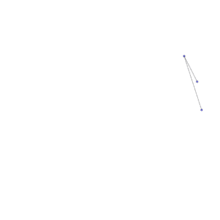A social network[1], as the term suggests, is a system that connects various individuals or organizations, also known as social actors. It’s not just about online platforms like Facebook[2] ou Twitter[3], but about the intricate web of connections between these actors. The relationships, known as dyadic ties, allow for interaction and communication. By studying these networks, we can identify patterns and understand how influence works within the group. The field of social network analysis has roots in several areas such as social psychology, sociology, statistics, and graph theory. It’s an evolving interdisciplinary field that uses various methods to analyze these social structures and provides theoretical explanations for the observed patterns. Key figures like Georg Simmel and Jacob Moreno have made significant contributions to this field.
A social network est un social structure made up of a set of sociale actors (such as individuals or organizations), sets of dyadic ties, and other social interactions between actors. The social network perspective provides a set of methods for analyzing the structure of whole social entities as well as a variety of theories explaining the patterns observed in these structures. The study of these structures uses l'analyse des réseaux sociaux to identify local and global patterns, locate influential entities, and examine network dynamics.

Social networks and the analysis of them is an inherently interdisciplinary academic field which emerged from social psychology, sociology, statisticset graph theory. Georg Simmel authored early structural theories in sociology emphasizing the dynamics of triads and "web of group affiliations". Jacob Moreno is credited with developing the first sociograms in the 1930s to study interpersonal relationships. These approaches were mathematically formalized in the 1950s and theories and methods of social networks became pervasive in the social and behavioral sciences by the 1980s. Analyse des réseaux sociaux is now one of the major paradigms in contemporary sociology, and is also employed in a number of other social and formal sciences. Together with other complex networks, it forms part of the nascent field of network science.